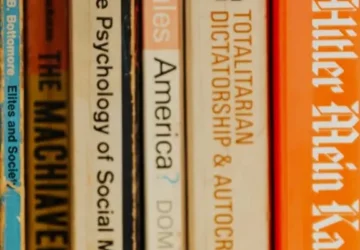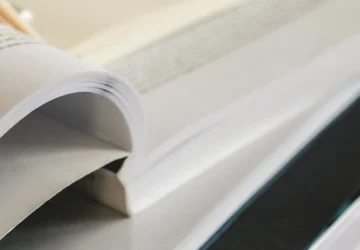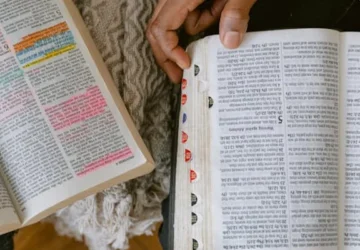
What Hobby to Start: Finding Joy in Your Free Time
You don’t need a makeover to feel more alive—you need a habit you look forward to. Two hours a week sketching city corners, a dawn loop around the park, or a Sunday bake that feeds three lunches can shift your mood, your energy, and your calendar. The question behind “What Hobby to Start: Finding Joy in Your Free Time” isn’t abstract; it’s practical: how do you pick a hobby that fits your attention, budget, and space—this month, not someday.
Your intent is simple: find a hobby that actually sticks. This guide maps a fast path to a good fit, with hard numbers, starter steps, trade-offs, and example routines you can test in four weeks without sinking money or confidence.
Start With A Diagnosis, Not A Guess
First, choose your outcome. Most people seek one of three results: stress relief (calm and recovery), skill growth (progress you can measure), or social connection (new or deeper relationships). Rank these 1–3. Your choice changes the best starter: yoga for calm, language apps for measurable progress, community gardening for connection. If you say “all of the above,” pick an anchor outcome now and revisit in a month—trying to satisfy every goal at once dilutes motivation.
Audit your constraints to avoid false starts. Time: how many reliable hours can you invest weekly—2, 5, or 10? Money: set a 30-day cap—$0, $20, or $100. Space: available area—desk, kitchen counter, or a backpack. Energy: note when you feel alert vs. drained across a typical week. A hobby that needs daylight and floor space (painting on canvas) won’t survive if your only free slot is 9 p.m. at a small kitchen table, but digital sketching on a tablet might.
Run a seven-day “energy log.” At three points daily, jot a 1–10 score for mental bandwidth and physical restlessness, plus one word describing your mood. After a week, classify your peaks: creativity (ideas flow), learning (curious, focused), movement (antsy, want to move), or calm (crave quiet). Choose a hobby that converts your peak into a match: creative peaks favor drawing or photography; learning peaks fit chess puzzles or design tutorials; movement peaks point to running or yoga; calm peaks suit gardening or reading.
Make a friction score before you start: how many steps from “I want to do it” to “I’m doing it” (0–5)? Shoes by the door and a loop planned is a 1 for running; a hobby that requires clearing a table, prepping supplies, and cleanup may be a 4. In general, hobbies with friction ≤2 are likelier to stick in busy weeks. If your favorite idea scores high, redesign it: pre-pack a sketch kit, switch to smaller canvases, or find a local studio that handles setup and cleanup.
Creative And Digital Hobbies You Can Start Today
Drawing builds observational focus with near-zero cost. Buy a $10 sketchbook and a 0.5 mm mechanical pencil, or use printer paper and a pen. Start with a 20-minute daily routine for 14 days: 5 minutes of warm-ups (ellipses and straight lines), 10 minutes blind contour drawing of items on your desk, 5 minutes value shading from light to dark. Expect visible improvement by day 10; your lines get smoother as your wrist learns consistent pressure. Trade-off: you’ll be bad at first—plan to fill your first 30 pages quickly so “bad” turns into “done.”
Photography leverages the camera you already own. Set a 30-shot constraint: shoot only at “golden hour” for one week. Tap to focus; slide exposure to avoid blown highlights. Practice three compositional rules: rule of thirds (subject off-center), leading lines (paths or rails), and frame within a frame (windows, arches). For sharp handheld shots, keep shutter at or faster than 1/60 for people; if your app allows, lock ISO at 100–400 outdoors. Measurable goal: produce 5 keepers in 200 shots—a 2.5% keeper rate is normal for beginners; aim for 5% after a month.
Design and AI art scratch the creative itch with guided structure. Try a free design app and mimic a poster you admire—same layout, different content. You’ll learn spacing, type hierarchy, and color contrast faster by copying with intent than by staring at a blank canvas. For AI art tools, prompt with a repeatable template: subject + style + lighting + lens or medium (e.g., “a rainy street at night, film noir, backlit, 50mm look”). Trade-offs: AI accelerates exploration but can flatten your personal style; use it to generate mood boards, then craft a final piece by hand or in a design app. Respect copyright and community rules when you share.
Keep screen time honest. Cap creative screen sessions at 45–60 minutes with a 5-minute standing break every 25 minutes (simple Pomodoro). Log output, not time: “3 sketches, 30 exposures, 1 poster draft.” If you can’t see what you’ve made by the end, the session didn’t count. Budget-wise, stay under $20 in month one: sketchbook, pens, or a mobile app upgrade. Save larger purchases (tablets, lenses) until you’ve done 10 sessions in 30 days.
Active And Outdoor Hobbies That Wake Up Body And Mind
Running is the simplest cardio habit to adopt if you scale gradually. Start with 20 minutes, three times weekly: 2 minutes easy jog, 1 minute walk, repeat. Increase total time by no more than 10% each week to reduce injury risk. Keep most effort in “talk test” intensity—you can speak in sentences. Shoes matter more than gear: a basic, neutral pair replaced every 500–800 km will serve most beginners. Marker of progress: your resting heart rate may drop by 5–10 bpm after 6–8 weeks if you’re consistent.
Yoga blends strength, mobility, and calm. A 10-minute routine (cat-cow, downward dog, lunge, plank, child’s pose) can unlock tight hips and back from desk work. Use a timer and count breaths (4–6 per pose) to prevent rushing. If flexibility is your bottleneck, measure with a simple test: seated forward fold—how far do your fingertips reach past your knees? Recheck every two weeks. Trade-off: progress is subtle; photos or a short video help you notice alignment improvements.
Hiking offers nature’s reset with scalable difficulty. Begin with a 60–90 minute loop under 200 m elevation gain. Pack 500 ml water per hour, a snack with 200–300 kcal, and a light layer. Footwear: trail runners are fine for easy trails; boots help on rocky terrain. Safety rule: download offline maps and tell someone your route. If you like data, track pace and elevation; a beginner-friendly benchmark is 3–4 km per hour on undulating terrain. Joining a local group can multiply adherence—scheduled meetups replace willpower.
World Health Organization — 150 minutes per week of moderate activity or 75 minutes of vigorous activity is associated with lower cardiovascular risk and improved mental well-being.
Pick the right intensity zone. For steady efforts, aim for 60–70% of your estimated max heart rate (the simple 220 minus age is a rough guide, not a medical test). Or use Rate of Perceived Exertion (RPE): 3–4 out of 10 should feel sustainable for 30 minutes. Outdoor choices add mood benefits from daylight exposure; 20–30 minutes of morning light can anchor your sleep-wake cycle, which often improves energy more than another coffee.
Relaxing And Social Hobbies That Recharge Without Pressure
Reading converts small daily windows into disproportionate learning. At ~200 words per minute, 20 minutes per day equals 4,000 words; that’s roughly a 250-page book every 3–4 weeks, or 10–20 books per year depending on length and consistency. Low-friction system: pick a book that matches your current energy (light fiction for evenings, non-fiction for mornings), set a standing 20-minute slot, and keep a highlighter or notes app for one actionable takeaway per chapter. If attention drifts, try audiobooks at 1.25x while walking—movement often boosts focus.
Cooking pays off in health and budget. Start with a single-sheet-pan recipe or a one-pot stew. Batch once a week for 90 minutes to produce 8–12 portions: double a chili recipe, roast a tray of vegetables, and cook a pot of grains. Store in clear containers so the food is visible; this one tweak reduces waste. Measure impact: track food spending for four weeks—you’ll often shave 10–30% versus frequent takeout. Trade-off: cleanup time; mitigate with a sink of hot soapy water while you cook and a 10-minute end-of-session reset.
Gardening teaches patience and rewards attention. If space is tight, start a container herb garden: basil, mint, and chives thrive on a sunny sill. Expect to spend $15–$30 on pots, soil, and starters. If you have a balcony, cherry tomatoes or peppers are manageable; a single plant can yield dozens to hundreds of fruits over a season. Water consistently, rotate for even sun, and pinch herbs weekly to encourage bushy growth. Besides produce, the routine of tending plants for 5–10 minutes a day is a proven wind-down ritual.
Social time online can be restorative when bounded. Join a book club, a cooking challenge, or a hobby forum to exchange wins and fixes. Light entertainment—including playing in an online casino for fun and relaxation—should be handled like dessert: enjoyable, intentional, and portion-controlled. Prefer free-play or tiny stakes, cap sessions at 15–20 minutes, and never chase losses. If you notice compulsion or mood dips, stop and switch to a non-monetary game or another hobby; evidence on the well-being effects of screen entertainment is mixed and highly individual.
Conclusion
Treat this month as a test. Choose one hobby aligned to your top outcome, cap spending at $20, and schedule four sessions per week at your highest-energy time. Log output, not minutes, and cut any option that still feels like a chore after six honest tries. Rotate in a new candidate next month using the same rules. The fastest path to “What Hobby to Start: Finding Joy in Your Free Time” is iterative: small stakes, clear constraints, and steady reps until one habit makes your days feel lighter—and keeps you coming back.
Recommended for you

Must-Read Books on Politics and Society
Why does the world feel so chaotic? We watch the daily news and see a storm of seemingly random, disconnected events. A financial market crashes. A new law is passed. A war breaks out. A populist leader rises. A corporation makes a decision that affects millions. We treat these events as “news.” As discrete happenings. […]

Choosing Textbooks for First-Year Students
Becoming a first-year university student involves a series of new, confusing, and often expensive decisions. None is more immediate or frustrating than your first trip to the campus bookstore. You are handed a list of required texts for your five new classes, and the total at the bottom of the receipt could easily fund a […]

What Age Do Kids Start Reading and How to Support Their Learning
There is one question that lives in the back of nearly every new parent’s mind, a question often loaded with anxiety: “What age do kids start reading?” We see other children in preschool who can already identify words. We hear conflicting advice. We are programmed to look for a single, specific milestone age 5, age […]

Philosophy Books That Change Worldviews
Some books are entertainment. Some are information. A very small few are dynamite. They don’t just add to what you know; they change how you know it. They are philosophy books that change worldviews by locating the hidden assumptions you live your life by the very foundations of your “common sense” and putting a metaphorical […]

How to Take Notes from Books and Lectures
Look at a typical student’s notebook after a lecture. What you will likely see is a dense, frantic wall of text. The student has spent 50 minutes in a desperate sprint, trying to act as a human stenographer, to capture every word the professor said. They leave the lecture exhausted, with cramped hands and a […]

Sci-Fi vs Fantasy: Key Differences and What to Read
On the surface, the difference seems simple. One genre has spaceships and aliens. The other has dragons and elves. Science Fiction, we are told, is about the future, and Fantasy is about the past. This is a shallow analysis. And it is wrong. This “aesthetic” definition one of props and settings collapses immediately under any […]

Best Biographies of Influential Figures
What makes a biography “great”? The simple answer is “accuracy.” A good biography, we assume, is one that gets all the facts right. It has the correct dates, the verified quotes, the detailed footnotes. This answer is true, but it is incomplete. It is the answer for a historian, not a reader. A simple collection […]

What Is Close Reading and Why It Matters in Modern Education
We are drowning in words. We read more today than at any other point in human history. We scroll through articles. We skim headlines. We digest hot takes, social media posts, and endless comment threads. Our brains, rewired by the digital age, have become incredibly efficient at one specific skill. Skimming. We have trained ourselves […]